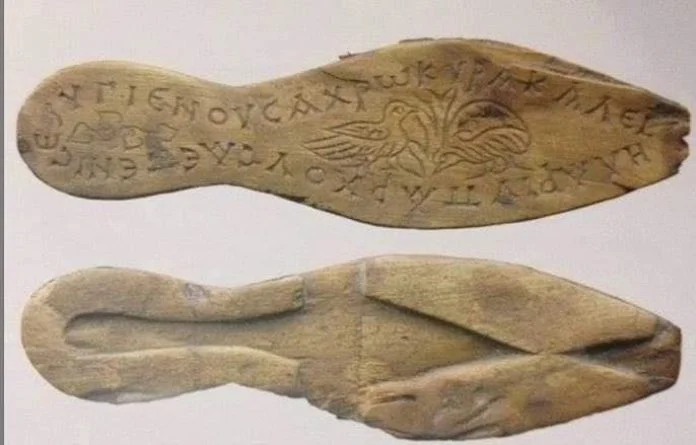In a remarkable archaeological discovery in Istanbul, a pair of women's sandals, dating back 1,500 years, has captured the attention of researchers and visitors alike. Unearthed during excavations linked to the Marmaray project, these sandals offer a poignant glimpse into Byzantine fashion and sentiment.
The most striking feature of these ancient sandals is the inscription in Greek adorning them. It reads, "Use in health, lady, wear in beauty and happiness," reflecting not only the practicality of footwear but also the wishes for well-being and joy expressed by the wearer or maker.
Believed to have belonged to a Greek woman, these sandals embody the fashion preferences of the Byzantine Empire. Known for their love of color and intricate patterns, Byzantines adorned their clothing and accessories with rich designs, showcasing their cultural sophistication.
Modesty was a prevailing cultural norm in Byzantine society, evident in the conservative styles of clothing. Despite the emphasis on covering up, the footwear discovered in the excavation project reveals a flair for ornamentation, with sandals, slippers, and boots adorned with elaborate decorations.
Of particular interest is the prevalence of red in women's footwear, a color often reserved for Imperial use in male shoes. This contrast highlights the nuanced gender dynamics and fashion choices of the time.
The excavation efforts, initiated in 2004, have yielded a wealth of historical artifacts, shedding light on Constantinople's vibrant past. With around sixty thousand artifacts currently housed in the Istanbul Archaeological Museum, these discoveries continue to enrich our understanding of Byzantine culture and civilization.
Beyond fashion, the excavations have unearthed significant archaeological finds, including the Harbor of Eleutherios and a vast collection of medieval sunken ships. These discoveries offer invaluable insights into Constantinople's role as a hub of trade and commerce in Late Antiquity.
Moreover, the excavation has revealed the oldest evidence of settlement in Constantinople, dating back to 6000 BC. Artifacts ranging from ancient footprints to pottery fragments provide a comprehensive view of the city's ancient origins and development over millennia.
As researchers continue to unravel the mysteries buried beneath Istanbul's surface, each discovery serves as a testament to the enduring legacy of the Byzantine Empire and its profound influence on the cultural heritage of the region.







